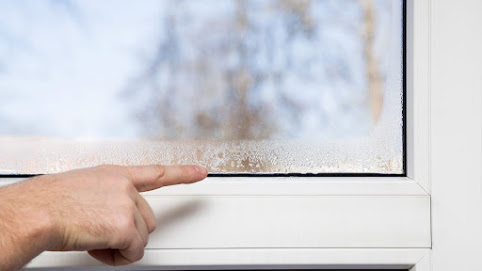Excess humidity in your home can lead to mold, mildew, and an uncomfortable living environment. Reducing indoor humidity is crucial for maintaining a healthy home. Still, it doesn't have to be at the expense of the environment. Here are some eco-friendly ways to keep your home's humidity levels in check:
1. Improve Ventilation
Proper Ventilation is one of the most effective ways to reduce indoor humidity. Open windows and doors when weather permits to allow fresh air to circulate. Use exhaust fans in kitchens and bathrooms to remove moisture-laden air during cooking and showering. Installing a heat recovery ventilator (HRV) can also help by exchanging stale indoor air with fresh outdoor air.
2. Use Houseplants
Certain houseplants can naturally absorb moisture from the air. Plants like Boston ferns, peace lilies, and English ivy are known for their ability to thrive in high humidity while also reducing it. Besides, they enhance indoor air quality and add a touch of greenery to your home.
3. Fix Leaks
Unchecked leaks can significantly increase indoor humidity. Regularly inspect your home for leaks, especially in areas like basements, bathrooms, and kitchens. Repairing leaky faucets, pipes, and roofs will prevent moisture buildup and reduce humidity levels.
4. Natural Desiccants
Utilize natural desiccants such as charcoal briquettes, baking soda, or rock salt. Place these in small, breathable containers around your home to absorb excess moisture. These desiccants are eco-friendly and can be easily replaced once they become saturated.
5. Air Dry Your Clothes Outside
Drying clothes indoors can add a significant amount of moisture to the air. Whenever possible, air dry your clothes outside. If outdoor drying is not feasible, consider using a clothes drying rack in a well-ventilated area or a dehumidifier-equipped room.
6. Energy-Efficient Dehumidifiers
If you need to use a dehumidifier, opt for an energy-efficient model. These devices use less electricity and are designed to effectively remove moisture from the air. Some models also come with eco-friendly refrigerants that have a lower environmental impact.
7. Insulate Your Home
Proper insulation helps regulate indoor temperature and humidity. By sealing cracks and insulating walls, floors, and ceilings, you can prevent outdoor humidity from entering your home and reduce the need for energy-intensive dehumidification.
Implementing these eco-friendly strategies can help you manage indoor humidity levels effectively while contributing to a healthier planet. By making small changes, you can enjoy a comfortable, moisture-free home and reduce your environmental footprint.





No comments:
Post a Comment